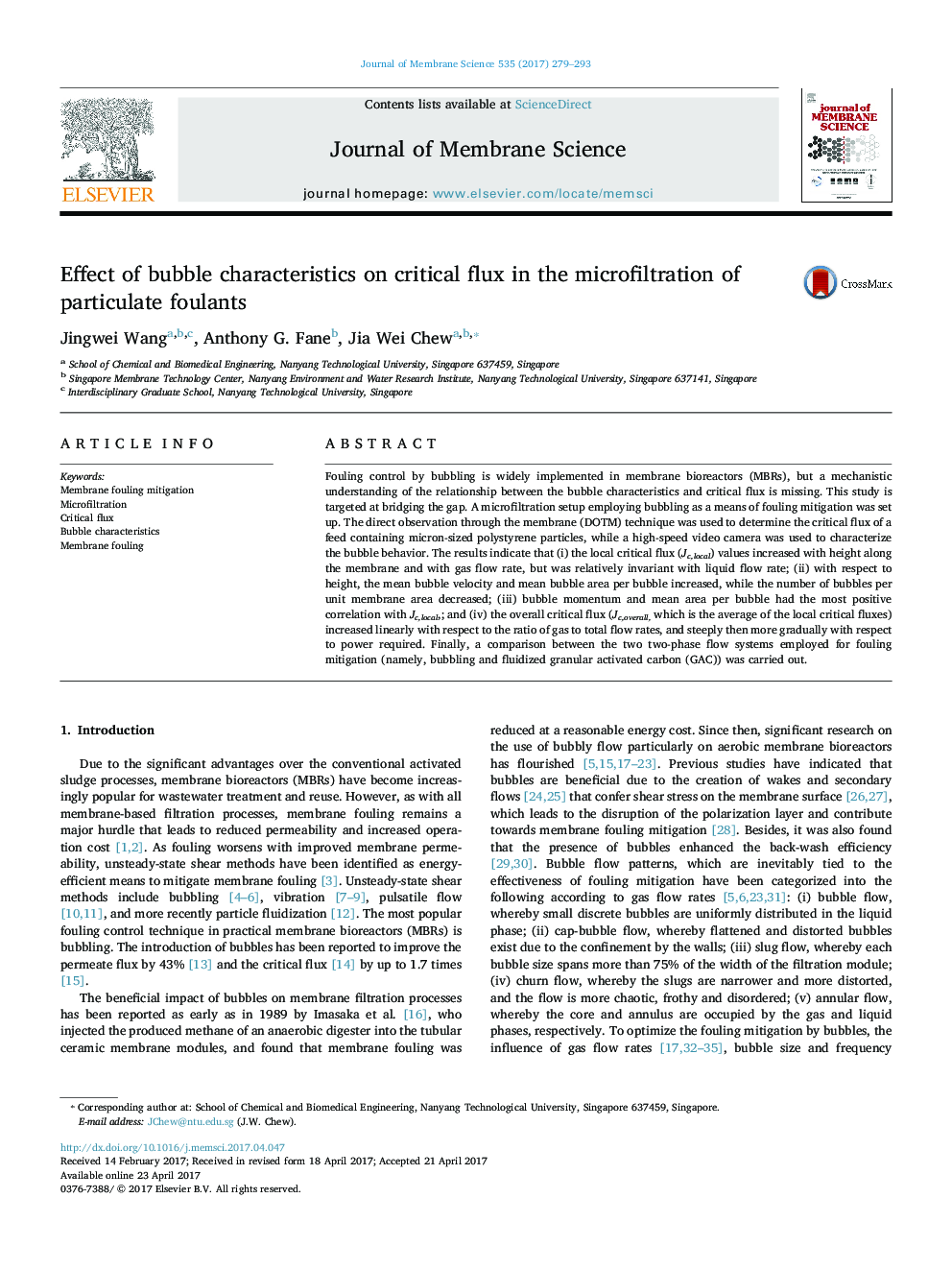| Article ID | Journal | Published Year | Pages | File Type |
|---|---|---|---|---|
| 4988916 | Journal of Membrane Science | 2017 | 15 Pages |
Abstract
Fouling control by bubbling is widely implemented in membrane bioreactors (MBRs), but a mechanistic understanding of the relationship between the bubble characteristics and critical flux is missing. This study is targeted at bridging the gap. A microfiltration setup employing bubbling as a means of fouling mitigation was set up. The direct observation through the membrane (DOTM) technique was used to determine the critical flux of a feed containing micron-sized polystyrene particles, while a high-speed video camera was used to characterize the bubble behavior. The results indicate that (i) the local critical flux (Jc,local) values increased with height along the membrane and with gas flow rate, but was relatively invariant with liquid flow rate; (ii) with respect to height, the mean bubble velocity and mean bubble area per bubble increased, while the number of bubbles per unit membrane area decreased; (iii) bubble momentum and mean area per bubble had the most positive correlation with Jc,local,; and (iv) the overall critical flux (Jc,overall, which is the average of the local critical fluxes) increased linearly with respect to the ratio of gas to total flow rates, and steeply then more gradually with respect to power required. Finally, a comparison between the two two-phase flow systems employed for fouling mitigation (namely, bubbling and fluidized granular activated carbon (GAC)) was carried out.
Keywords
Related Topics
Physical Sciences and Engineering
Chemical Engineering
Filtration and Separation
Authors
Jingwei Wang, Anthony G. Fane, Jia Wei Chew,
